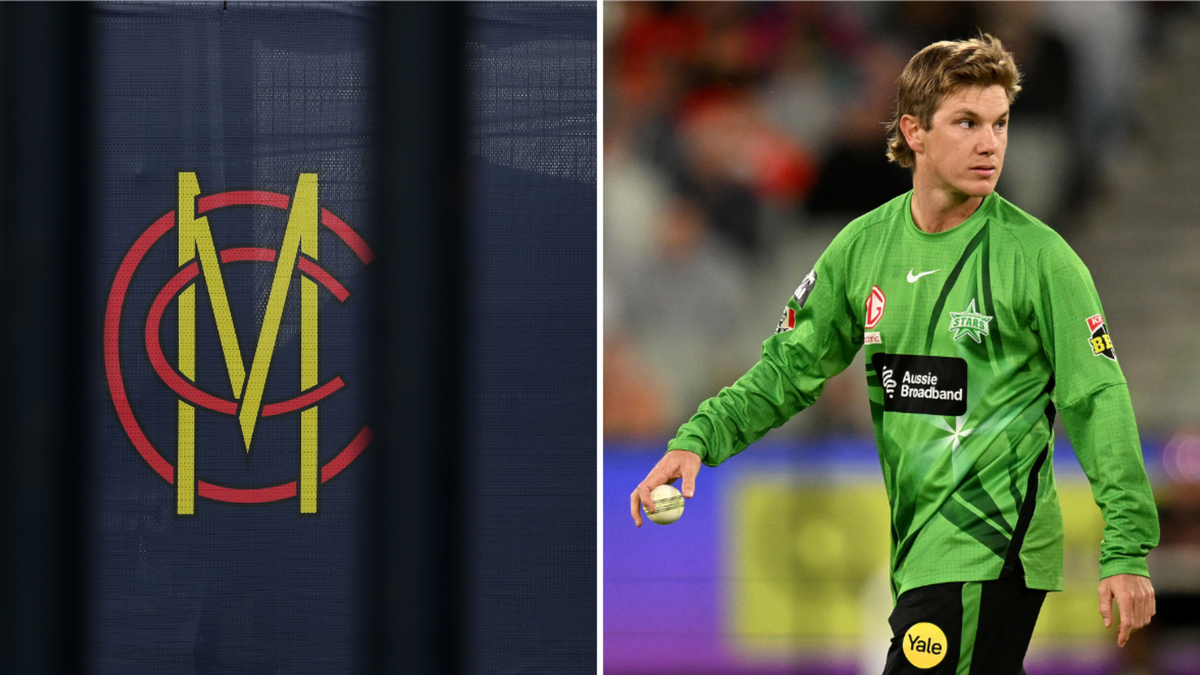
The MCC has updated its laws around non-striker run outs following the controversy around Adam Zampa’s attempted dismissal of Tom Rogers during a BBL match.
After an incident where Zampa tried to complete the run out at the non-striker’s end despite seemingly completing the majority of his bowling action, there were calls for the MCC to clarify the laws regarding when a non-striker run out can be affected. Rogers was given not out on the basis that Zampa’s bowling arm had already passed the highest point of his action, something that was not explicitly laid out in the Laws at the time.
Two sub-clauses have now been added to Law 38.3.1 to clarify at what point in a delivery the bowler is entitled to run out the non-striking batter.
While the main law regarding the method of dismissal remains the same, Law 38.3.1.1 now reads: “The instant when the bowler would normally have been expected to release the ball is defined as the moment the bowler’s arm reaches the highest point of his/her normal bowling action in the delivery swing.”
While the MCC issued a statement following the Zampa incident that the previous wording of the law was meant to be interpreted to mean that “The bowler is *not* entitled to go all the way around in the bowling action and then run the non-striker out,” this was previously not included anywhere in the Laws and the MCC faced calls to formally implement that statement.
A second additional clause to the main law reads: “Even if the non-striker had left his/her ground before the instant at which the bowler would normally have been expected to release the ball, once the bowler has reached that point it is no longer possible for the bowler to run out the non-striker under this Law.”
In a statement alongside the rule change, the MCC said: “We acknowledge that while this Law has generally been understood well by players and umpires, there is ambiguity in the wording which could lead to confusion. MCC has therefore moved to change the wording of Law 38.3 to deliver better clarity. The current wording led some to think that if the non-striker left his/her ground before the expected moment of release, then the Run out could happen at any moment, even after the bowler had gone through the bowling action. That was never the intention of this Law, nor the way it was ever interpreted by MCC.
“It is important to note that this does not change the way the Law should be interpreted – it has been interpreted that way for the past six years, without much misunderstanding. However, the intention is that this will make things clearer.”
The change comes after last week MCC laws manager, Fraser Stewart told the Wisden Cricket Weekly podcast: “We’ve been looking at that this week in light of this because I think some people are not reading the law wrongly, but they’re not quite getting the emphasis as we would like it. So there’s perhaps a bit of tidying up [needed] there just to make it clear.”
There have been several high-profile incidents of Mankads in the last six months. Deepti Sharma implemented that method of dismissal against England in the final women’s ODI match of the series last summer, while there have also been further cases in amateur cricket, franchise tournaments and the ongoing women’s Under-19 World Cup.








